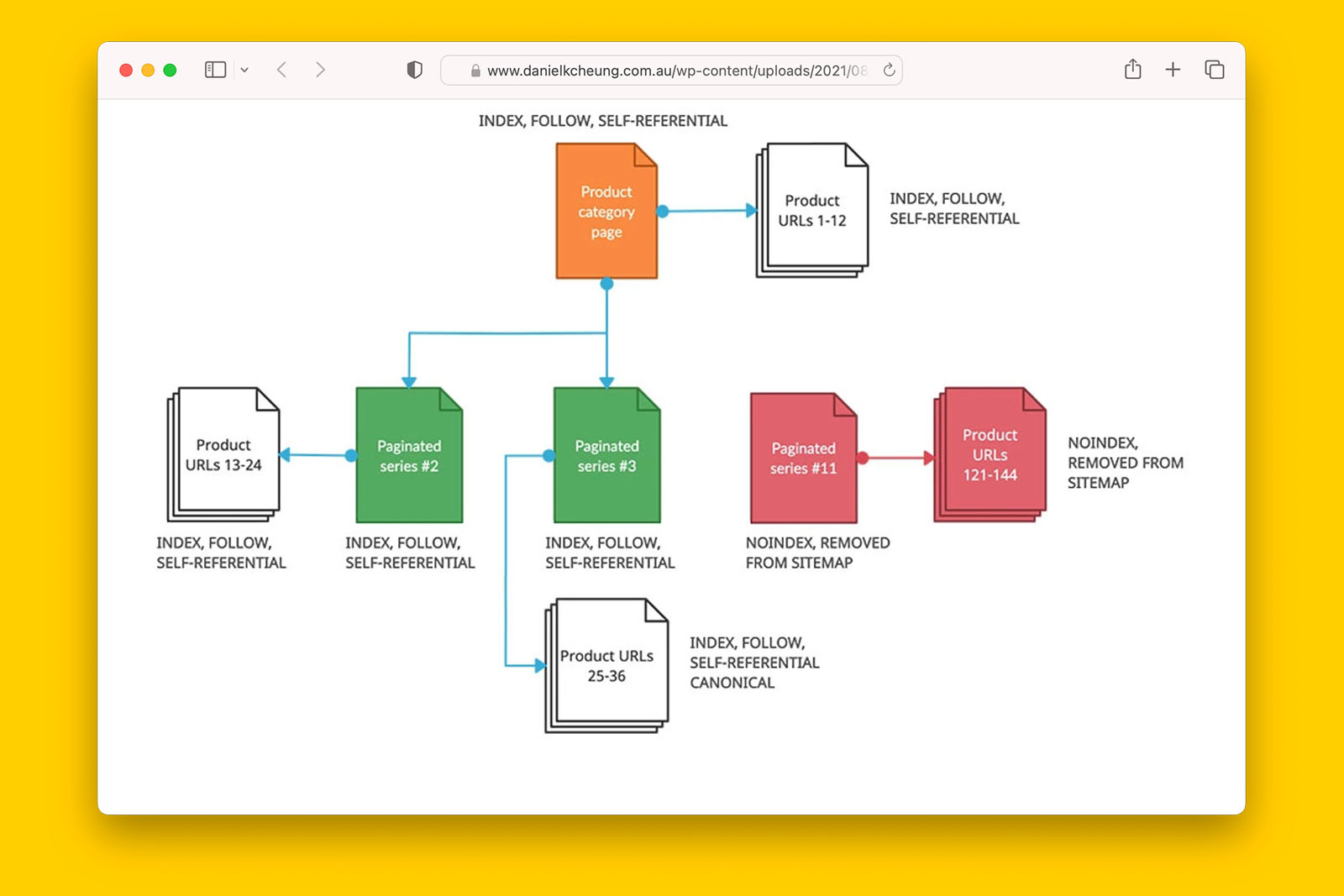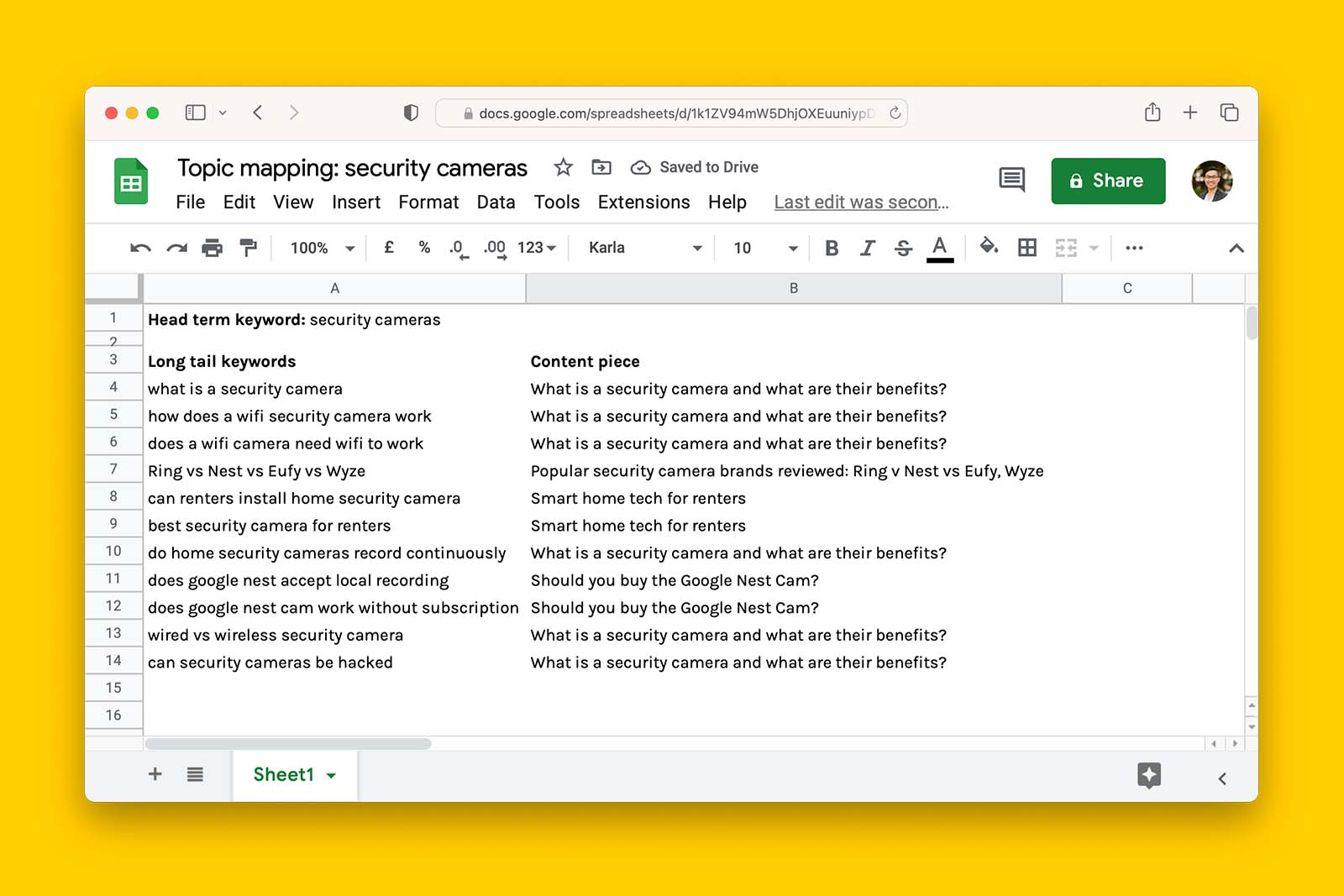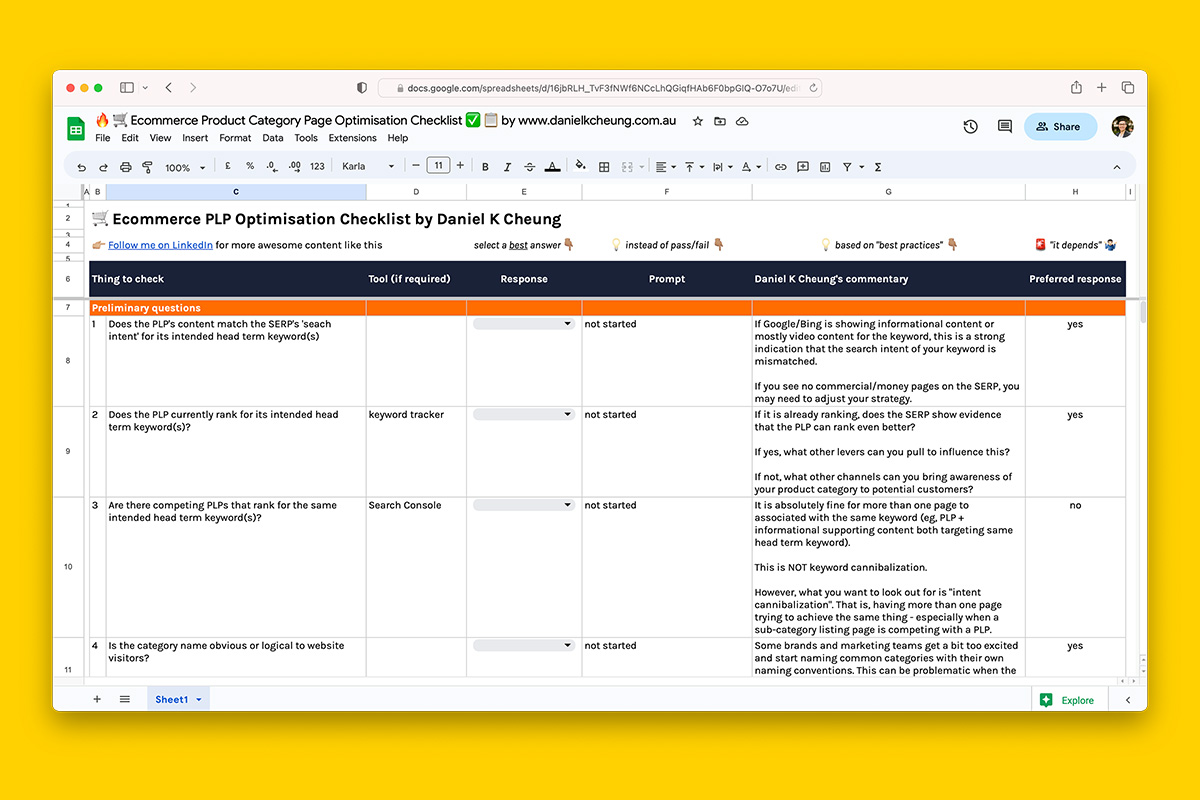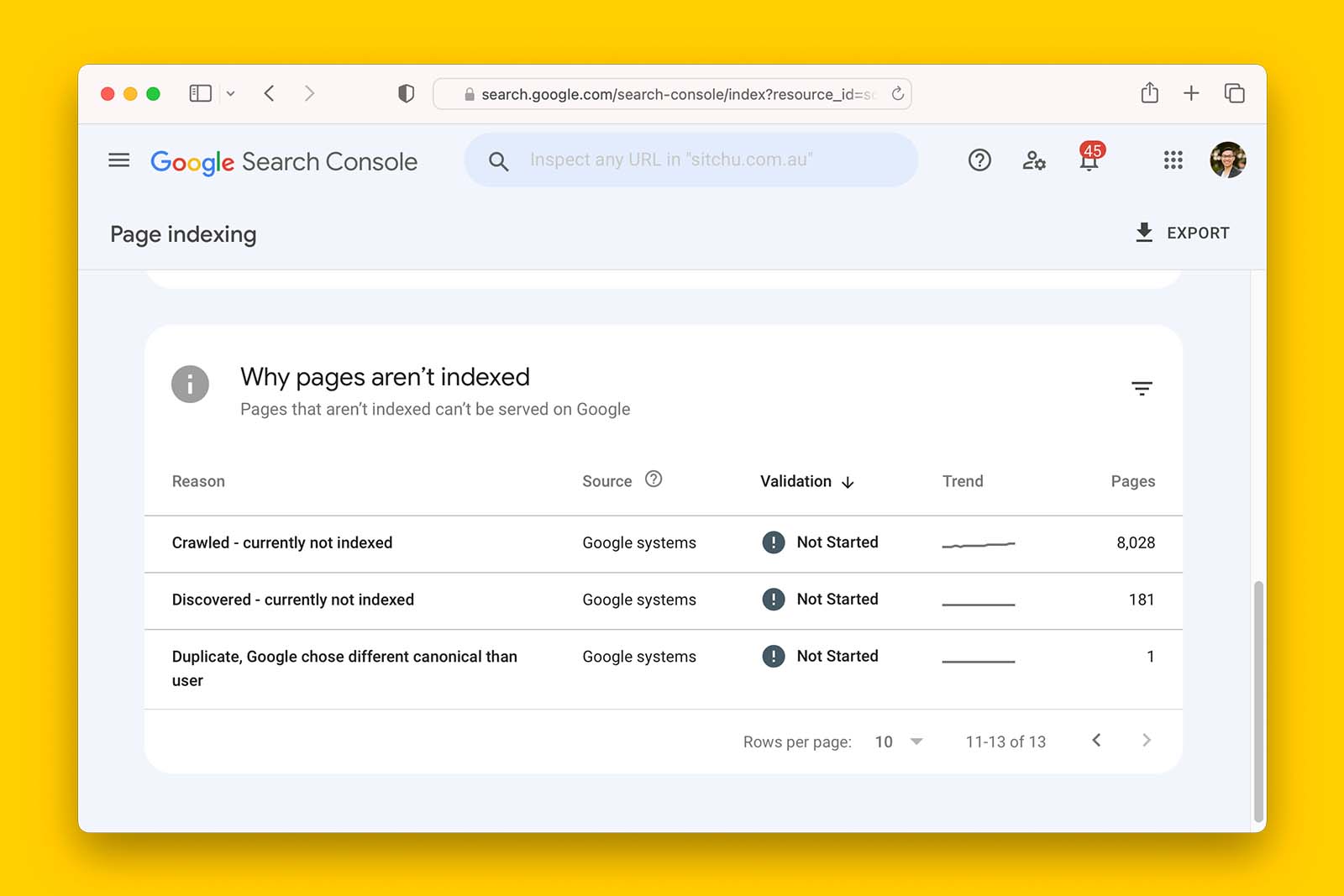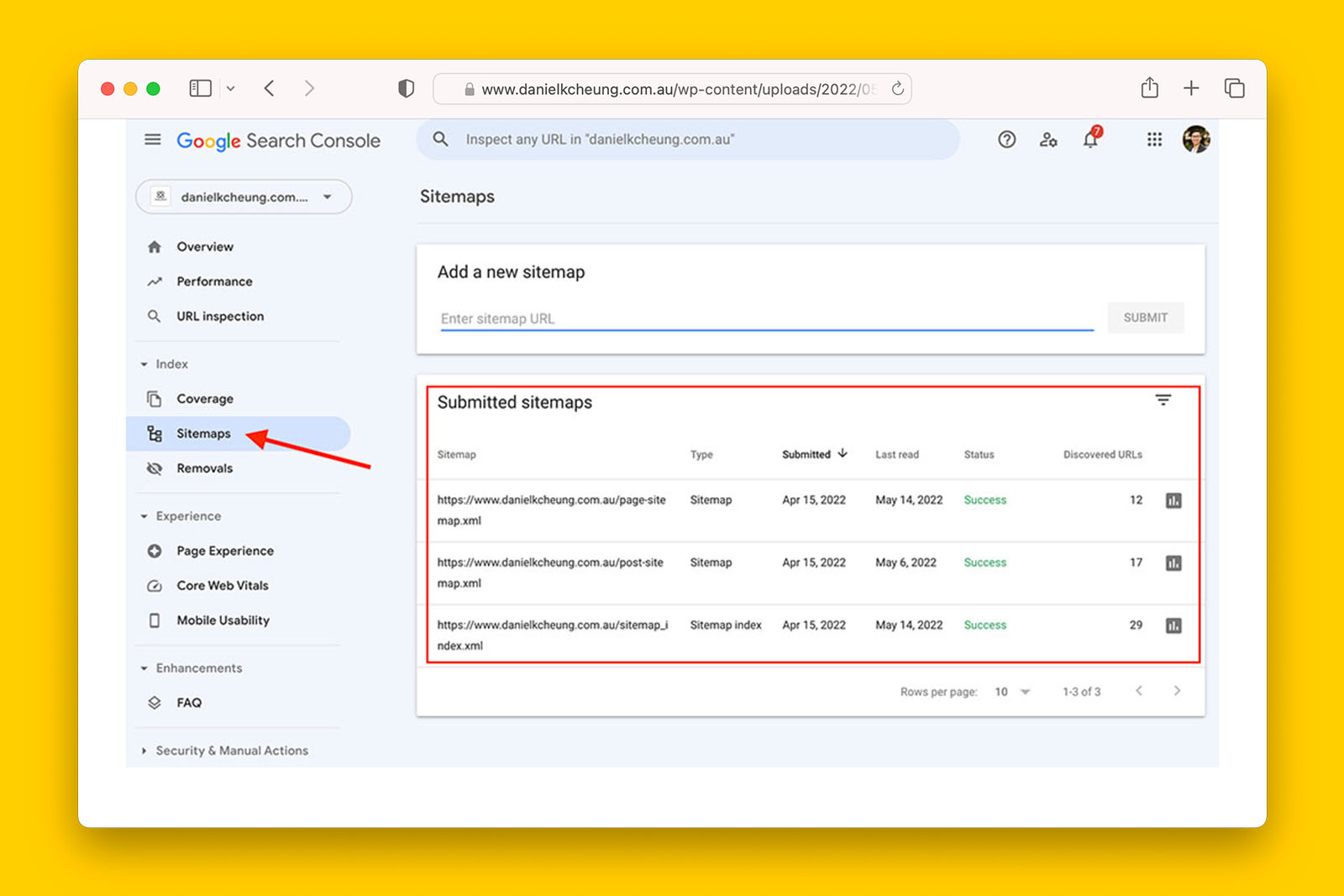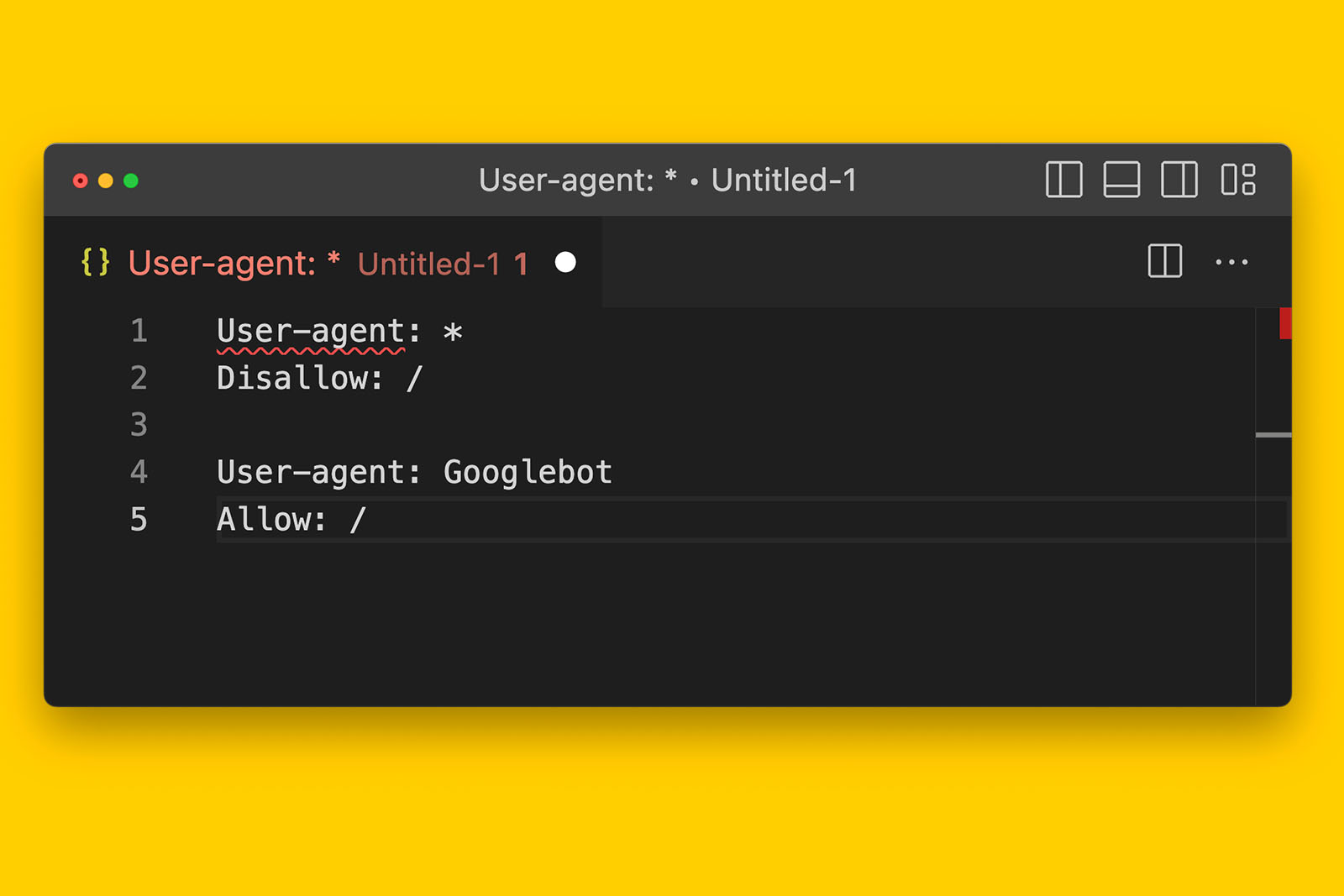Use this template for search engine optimised content writing without needing to know SEO
Key takeaways:
- Download the template (via Google Docs)
- Jump to instructions
- See a sample content brief I prepared earlier
Content is a main driver of organic growth because content is what brings people to a website. However, getting your content to rank in the SERPs can be difficult and requires some SEO knowledge. This is because writing useful and engaging content doesn’t always go hand-in-hand with SEO formatting.
My content brief template will solve this for you:
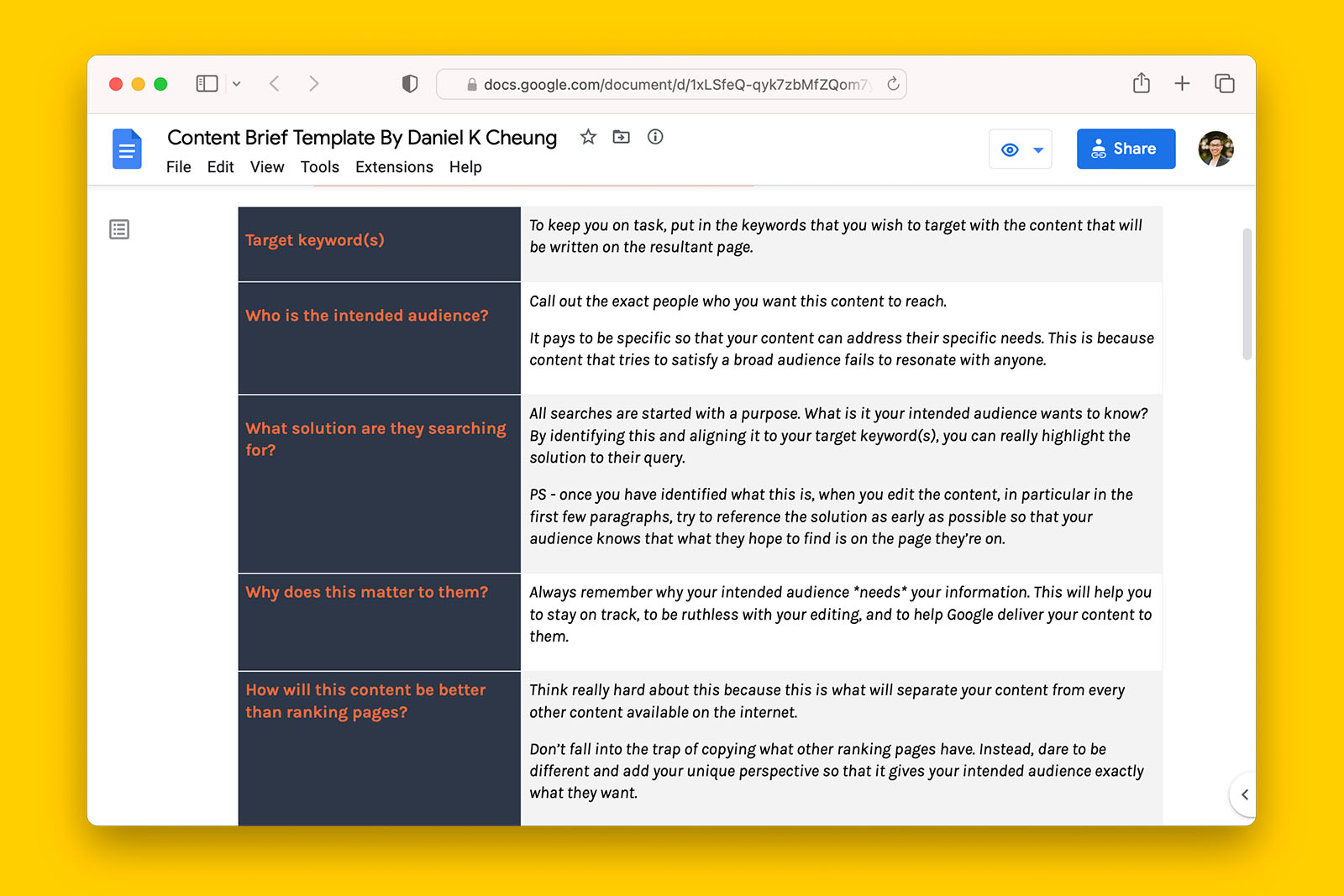
Without getting into the complexities of onpage SEO, my content brief will allow you or your writer to:
- satisfy search intent for one or more intended audiences, and
- allow Google to understand the context of the content and who it is for so that it can rank it in the SERPs.
Instructions
The content brief template is effective for:
- niche websites in any vertical (pets, finance, health, fitness goods)
- affiliate marketing websites
- informational pages for service-based websites
- product category pages
- product detail pages
Let’s get started!
1. Choose a target keyword
To keep you on task, put in the keywords that you wish to target with the content that will be written on the resultant page.
2. Decide who will want to read this information
Call out the exact people who you want this content to reach.
It pays to be specific so that your content can address their specific needs. This is because content that tries to satisfy a broad audience fails to resonate with anyone.
3. Define the problem that they are hoping to solve
All searches are started with a purpose. What is it your intended audience wants to know? By identifying this and aligning it to your target keyword(s), you can really highlight the solution to their query.
PS – once you have identified what this is, when you edit the content, in particular in the first few paragraphs, try to reference the solution as early as possible so that your audience knows that what they hope to find is on the page they’re on.
4. Understand why this problem is important to them at this point in time
Always remember why your intended audience needs your information. This will help you to stay on track, to be ruthless with your editing, and to help Google deliver your content to them.
5. Define why your unique perspective or solution deserves to be found on Google
Think really hard about this because this is what will separate your content from every other content available on the internet.
Don’t fall into the trap of copying what other ranking pages have. Instead, dare to be different and add your unique perspective so that it gives your intended audience exactly what they want.
6. Identify existing URLs that this content should link to
Supporting content should always link to the pillar/money page. This is an opportunity to use the target keyword as the anchor text to link to your pillar page(s).
Supporting content can and should link to related supporting URLs. Doing so builds Google’s understanding of the topical network that you are building article by article.
7. Identify existing URLs that can link to this content once published
To help Google discover and understand the context of this content, find at least one URL to link to this page – preferably an existing page that has traffic and/or links.
When linking to this content, use the primary target keyword as the anchor text of the internal link.
